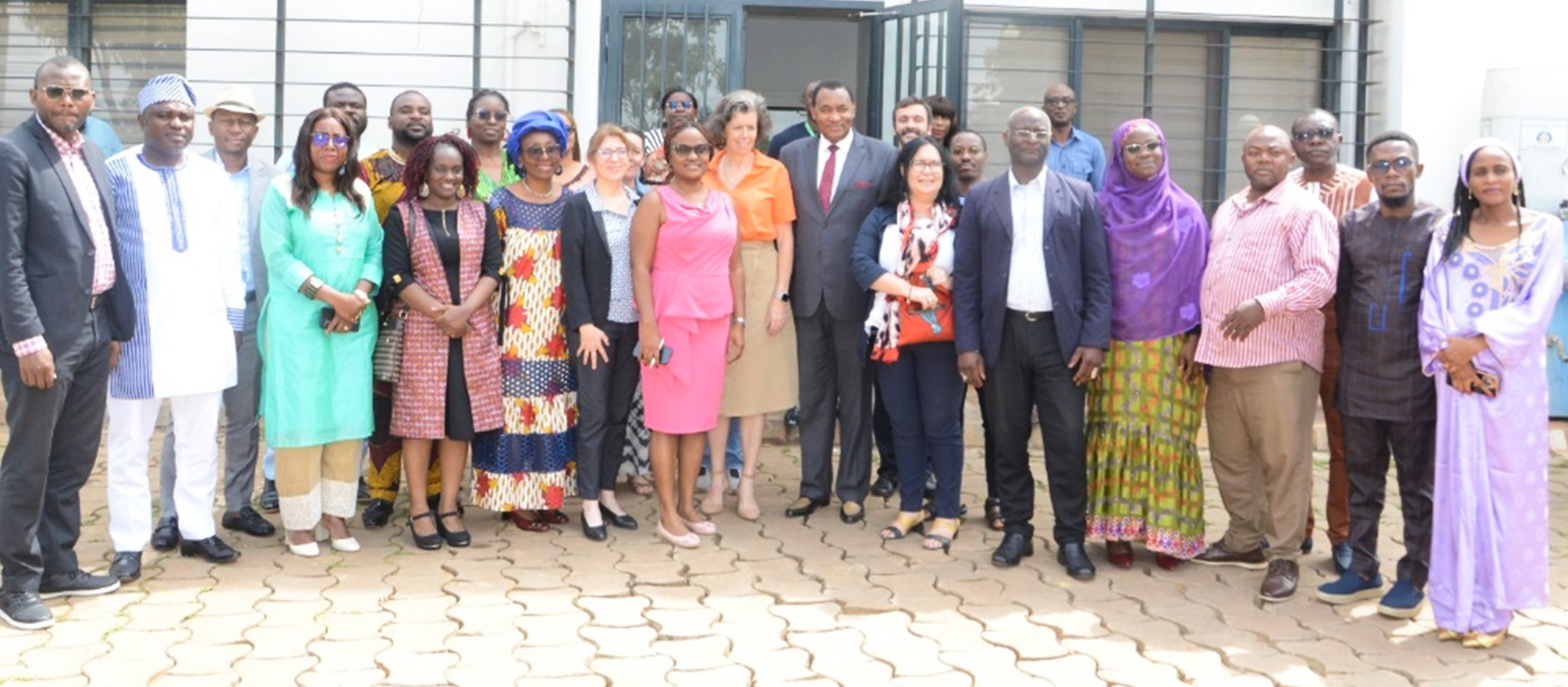TDR participated in an investigation to understand the resurgence of yellow fever in Cameroon, respond early to outbreaks and work towards eliminating epidemics by 2026.
In December 2023, in the Public Health Emergency Operations Coordination Center premises in Yaoundé, Cameroon, representatives from governmental departments and public health organizations came together for a workshop to discuss findings from in-depth evaluations on yellow fever resurgence in the country.
Cameroon is one of the 27 high-risk countries for yellow fever in Africa and was ranked second in 2023. The Government of Cameroon has shown that it is committed to the fight against yellow fever.
Cameroon introduced the yellow fever vaccine into its routine immunization schedule in 2004 and has conducted nationwide Preventive Mass Vaccination Campaigns. Points of entry into the country, such as airports, require evidence of yellow fever vaccination, which are mandatory for all travellers. Despite these measures, yellow fever cases have been reported since 2020 in multiple districts.
To analyse the root cause of this resurgence, the Eliminate yellow fever epidemics (EYE) Strategy and TDR supported the Ministry of Public Health of Cameroon in an evaluation process.
The EYE Strategy is a global coalition of 50 partners in 40 countries, including WHO, the United Nations Children’s Fund (UNICEF) and Gavi, the Vaccine Alliance. The EYE Strategy has three strategic objectives: to protect at-risk populations from yellow fever; prevent international spread and contain outbreaks rapidly.
TDR is a global programme of scientific collaboration that helps facilitate, support and influence efforts to combat diseases of poverty. It is co-sponsored by UNICEF, the United Nations Development Programme (UNDP), the World Bank and WHO. TDR’s new Strategy 2024-2029 addresses four major global health challenges affecting infectious diseases of poverty, one of which is epidemics and outbreaks.
Among the activities that took place was a review of key documents, including vaccination coverage data and work sessions with a national technical committee with representatives from health departments, as well as interviews with representatives from the Ministry of Public Health, the Ministry for the Environment, Nature Conservation and Sustainable Development, the Ministry of Forestry and Wildlife, UNICEF, Centre Pasteur du Cameroun, the United States Centers for Disease Control and Prevention (CDC) and the Centre for Research on Infectious Diseases.
The evaluation team also met with regional authorities and conducted a field visit to Foumbot district, where the last reactive vaccination campaign against yellow fever took place, to hear directly from the front-line healthcare workers and assess the local vaccination activities. The assessment included group discussions with community members.
An analysis was also undertaken to identify immunity gaps in the population. The number of individuals not protected against yellow fever was estimated in each district, including vulnerable populations. This root cause analysis will inform efforts to strengthen the routine immunization programme and ensure vaccination with a high coverage rate.

Participants in the recent investigation on yellow fever resurgence in Cameroon
The root cause analysis will inform efforts to strengthen the routine immunization programme and ensure vaccination with a high coverage rate.
There is a clear need for the EYE partners in Cameroon to ensure a collective and updated national EYE strategic plan to support effective vaccination, address urban outbreak readiness, as well as early detection and response to epidemics. Cameroon’s national yellow fever strategic plan is being reviewed with support from WHO, taking into consideration the findings from evaluation.
Since the inception of the EYE Strategy in 2017, 248 million people have been protected from yellow fever via vaccination campaigns in Africa. It aims to eliminate all yellow fever epidemics by 2026.
For more information, please contact Dr Corinne Merle at TDR and Dr Marie-Eve Raguenaud at EYE unit.

